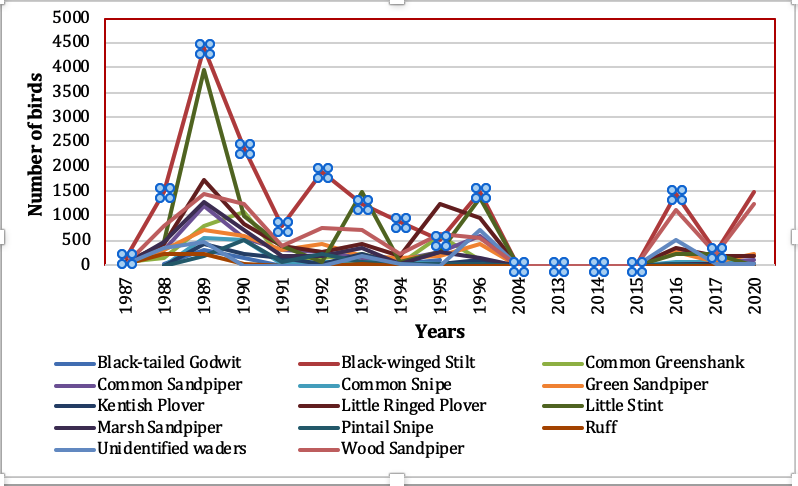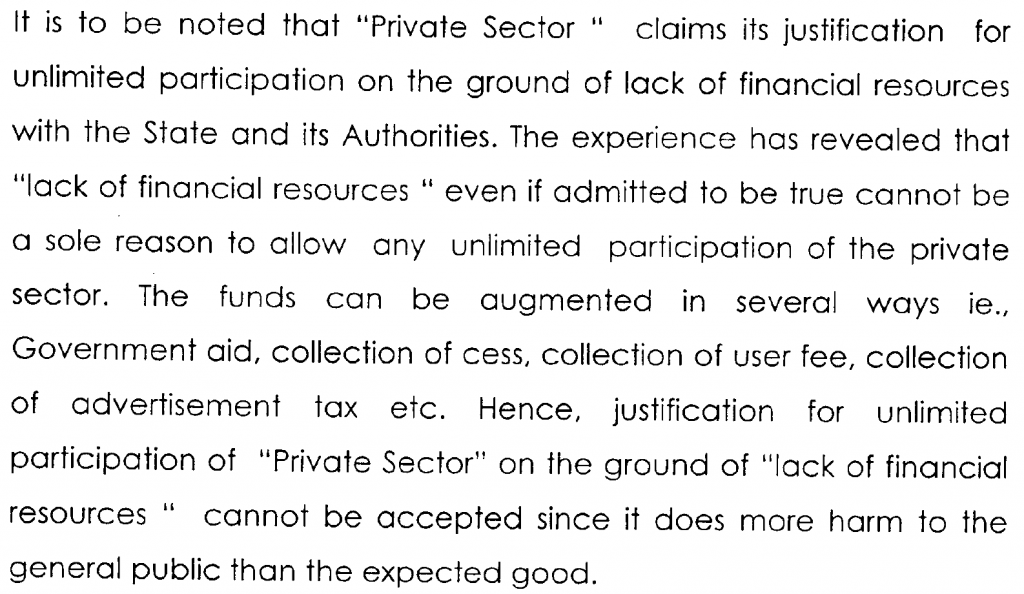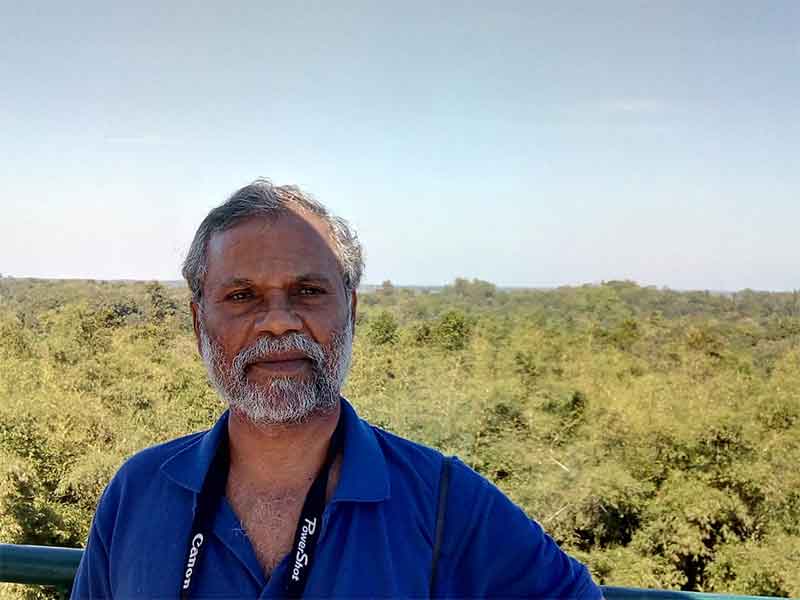
For almost two years now, Chief Justice Mr. Abhay Oka of the High Court of Karnataka has systematically developed jurisprudence to protect lakes as our commons, and for posterity. This is being achieved by his orders in a PIL filed by Citizens Action Group (CAG) PIL (WP 38401/2014). The jurisprudence reaffirms a schema for protecting and rehabilitating lakes based on their ground up monitoring, and for their rehabilitation through public involvement while ensuring regulatory oversight is transparent and accountable. Environment Support Group (ESG) (represented by ESG Counsel Sruti Chaganti) and I (as party in person) joined cause in 2018 with the CAG PIL (WP 38401/2014) that essentially is about encroachment and pollution of storm water drains in Bangalore which is causing contamination of lakes.
In our efforts in this PIL, we have invited the attention of the Principal Bench of the Karnataka High Court to the egregious violations of lake protection laws and norms that are being systemically promoted by the State of Karnataka and its multiple agencies, and also by Bruhat Bengaluru Mahanagara Palike and other civic bodies. In particular we brought to the attention of the Court that the 2012 order of the Court in ESG’s PIL advancing ecologically sound lake protection and rejection of the policy of privatisation of lakes or their management is being fundamentally violated.
High Court order in ESG’s Lakes case evolved a participatory schema for lake rehabilitation and management
It may be recalled that the 2012 order required the State to institute District Level Lake Protection Committees so people could access the forum with ease and locally, and thus be able to work with local agencies and local governments in protecting and rejuvenating lakes. The idea was to build water and ecological security across the State and ensure no lake and its Raja kaluves (canals) were encroached and contaminated – with peoples direct participation. Importantly, the order required the State Revenue Department to ensure every lake and its Kaluve would be surveyed, encroachments removed, and that they were protected with live fencing besides stopping their pollution. In the event the District Committees were not able to resolve contentious issues that emerged, or if they needed guidance, an Apex Committee headed by the Revenue Secretary was established to guide them. Importantly the Apex Committee would also serve as a quasi judicial authority to entertain complaints and pass necessary orders. An alternate dispute resolution mechanism was thus developed within easy reach of the public, a process that did not further burden Courts with litigation.
To further guide these committees, the High Court had requested Justice N. K Patil, who then was Judge of the Court and also Chairman of the Legal Services Authority, to formulate guidelines on appropriate lake management. Justice Patil Committee was constituted of 9 members who were senior most officials of agencies in some way involved in lake maintenance and protection. The Committee submitted two reports:
a) one relating to maintenance of rehabilitation of lakes through ecologically wise and socially just principles (2010),
b) and the second (in 2011) recommending lake management must not be privatised as it would encourage ‘colonisation’ by corporates entities.


The 2012 order also took note of an Affidavit filed by the State Government in which it was stated that it accepts recommendations to not privatise lakes any further. This submission was made in light of ESG’s PIL (filed in 2008) challenging privatisation of four major lakes of Bangalore: Hebbal, Nagawara, Agara and Vengaiah kere, even after they had been comprehensively rehabilitated with Norwegian grants by the Karnataka Forest Department.
In 2013 ESG filed a Contempt Case against the Chief Secretary of Karnataka as the 2012 Court order was not complied with. Fearing the wrath of the Court, the State Government quickly passed orders in December 2013 to establish District Lake Protection Cmts and the Apex Cmt. But they did not make them work.
New laws, yet no action
In 2014 the Karnataka Tank Conservation and Development Authority Act (KTCDA) was passed to attend to the rehabilitation of irrigation tanks/lakes and ponds in rural areas. In 2015 the Karantaka Lake Conservation Development Authority Act (KLCDA) was passed to attend to rehabilitation and rejuvenation of urban lakes. But nothing much happened in protecting lakes across the state. District Lake Protection Committees were not functional, or dysfunctional at best. There was no clarity about the functioning of the Apex Committee despite multiple efforts to access the forum.
In 2018 the Karnataka Legislature passed an amendment to the 2014 KTCDA setting up the Karnataka Tank Conservation and Development Authority (KTCDA) and repealed the 2015 KLCDA. The newly constituted Authority would regulate all matters pertaining to lakes across the State. The Lake Development Authority was wound up. When we tried to get KTCDA to work as per the law and judicial directives, our efforts were frustrated. There was no one to answer in the office for the most part.
As ESG continued to monitor the condition of lakes across Karnataka, we realised that the best efforts of the Judiciary and the Legislature in ensuring lakes are rejuvenated along with their Raja Kaluves – on ecologically sound and socially wise norms for posterity, acknowledging them as gifts from our ancestors which we are to pass on in a better state to generations to come – was being frustrated by the machinations of various State agencies and civic bodies.
First and foremost, the survey of lakes and raja kaluves ordered by the High Court in the 2012 order was not being undertaken in right earnest. And there were several glitches in the surveys undertaken: lakes were being left out, or their area marked down; or lakes were simply not being considered as lakes. The land that was left out in the process was being grabbed by the most influential and powerful. The extent of complicity of State and its agencies in encroaching lakes was indicative in some lakes being allotted as housing sites by Bangalore Development Authority.
This grave situation reminded us of the deep wisdom embedded in the High Court order – that lake protection must be undertaken with local community involvement and oversight, especially by democratically established local lake protection committees who would work in coordination with local governments. This way, not only would the spatial extent of lakes and raja kaluves (canals connecting lakes) be protected by an alert and local public, they would act to ensure lakes were not grabbed by vested and elite interests. Over time, people would ensure government agencies worked to protect lakes as commons, and not for private gain or benefit.
In stark contrast to the Court’s directions, ESG Team has discovered, based on close review of hundreds of pages of documentation and also field surveys of dozens of lakes, that lakes are being farmed out to various private parties under the guise of ‘developing’ them. This ‘development’ was undertaken without any attention to ecological and social characteristics of lakes, and essentially treating them as civil engineering structures to impound water. So over-engineered were some of these lakes that it made them impossible to function as wetland ecosystems. The result is that thousands of migratory waterfowl which came for foraging sites during winter were also frustrated to find sterile water bodies and had to go farther away in search of food and wetlands.
Bangalore’s loss of wetlands thus contributed further in threatening survival of rare species that had flown thousands of kilometres from Siberia, Mongolia and Eurasia over the mighty Himalayas in search of food and habitat. This truly was representative of how immune we had turned to our living planet.When we joined the CAG case, we brought all this to the attention of the Principal Bench of the High Court.
Ecological deterioration of Lakes due to their ‘development’ is resulting in massive decline of migratory waterfowl populations
On the basis of ESG’s and other Parties’ submissions, Chief Justice Oka has passed detailed orders to the State to conform with the 2012 directives and which have drawn the wide public to appreciate the crucial importance of protecting lakes as commons guided by the Public Trust Doctrine. He has also examined with meticulous detail if the 2012 High Court order in ESG’s Lake PIL had been implemented.

In the process of our submissions, we brought to the attention the Court that the Midwinter Waterfowl Census which was undertaken over four decades by the Birdwatchers Field Club of Bangalore, is not being conducted any longer in recent years. This is because there is no support from the State and its agencies as was the case in decades before. The Court responded with urgency, and advocating the need for regular waterfowl census directed the State to extend all help essential to the Club to conduct the census/survey during January-February 2020. The help never came. Yet the birders did the survey with their own resources.

As leading ornithologist Dr. S. Subramanya reports on the basis of these surveys, pollution, encroachment and over-engineering of lakes into ‘soup bowls’ has destroyed their ecological vitality. The adverse impacts of such development is evident in the sharp drop in numbers and diversity of birds – both that are locally resident and particularly of the migratory waterfowl. There are rare exceptions – such as the increase in numbers of darters and cormorants.
Subramanya’s reports, which have been taken note of by Chief Justice Oka, report that “there has been a noticeable decline in the abundances of Ducks & Geese and Shorebirds & Waders between 1989 to 2020. Thus, the Ducks & Geese have declined in number from 24400 in 1989 to 3662 in 2020. Similarly, the Shorebirds & Waders have declined from 5030 birds in 1989 to 1843 in 2020. This again reflects the loss of shallow-water, reedbed and vegetation covered areas, and the shoreline and water-edge areas, which are crucial to these birds.”


One major contributing factor for such serious decline in bird numbers in the Bangalore region, Subramanya reflects, is that is the direct “consequence of alteration of lake habitat, their extensive encroachment and contamination, particularly from mid-1990s to the present day”. Besides, it is an outcome of the “modification of the lake structure, the destruction of various microhabitats in the lake ecosystem due to their development into a ‘soup bowl’ structure”. He further analyses that “all the lakes in Bengaluru area used to be seasonal, in the sense that they would get impounded during monsoon and go dry by the middle of summer season and had a lake structure. Subsequent lake development model …has adopted a civil engineering model that have largely converted the lake structure (and) city lakes in the present day have become perennial due to the inflow of treated and untreated sources of water, which in turn has altered the ecology of lakes. These lake development models have total disregarded the recommendations made by Hon’ble Justice Sri N.K. Patil, (Patil 2011), which has clearly laid down guidelines for the ecological restoration of lakes. Thus, the alteration of the structure and ecology of lakes post-1996 appears to have had a telling effect on the bird diversity and abundances, which clearly reflect the degradation of lake habitats in the city of Bengaluru. The present day civil engineering `soup bowl’ model has failed to realize the importance of shallow regions of the lake and seasonality in sustaining urban biodiversity, as reflected by waterbirds that once inhabited these lakes.”

Illegal privatisation of lake management continues
The Karnataka Government, KTCDA and BBMP are now engaged actively promoting privatisation of maintenance of lakes and also their corporate control. This has been confirmed by way of an Affidavit of the State Government in Court. This affidavit confirms that possession of 6 lakes have already been handed over to various corporate entities and their foundations, including Infosys Foundation, Titan, Biocon and also to some little know entities. The State is considering handing over 9 more, and intends to spread this policy to includes all lakes in Karnataka. This model, we have contended, is blatantly destructive of the natural characteristics of the wetlands. In every lake so ‘developed’, walking paths have been built all around – almost as wide as motorable roads, and in some massive sewage treatment plants have been set up inside.

ESG team has surveyed dozens of lakes in Bangalore, and also few in other districts, and brought to the attention of the Court how the ongoing ‘development’ of lakes is resulting in their over-engineering not only as ‘soup bowls’, but that this approach results in excluding several local communities – especially the poor, in accessing these commons – as has been their tradition. In several of these lakes, local RWAs ensure the water bodies are turned into walking and recreational areas where even birders and photographers are unwelcome.
When 70% of the biodiversity of lakes is in the shallows, putting walking paths inside the lake is a true recipe for its absolute destruction as a wetland. These paths blocks water inflows from all around, and in time will serve to destroy the wetland.
Half of Hebbal and Nagawara lakes have disappeared as lakes
Chief Justice Oka directed on 16th January 2021 that the Revenue Secretary must file an affidavit soon explaining why the 2012 order remains without effective implementation even now. A review of Justice Oka’s order is indicative of a jurisprudence that not only advances the Public Trust Doctrine, but advances democratic right of the public to be involved in protecting, conserving and rejuvenating lakes as commons, and for posterity.
Even as the Court is seized of the matter, the Government Notifications issued declaring spatial extent of Hebbal and Nagawara lakes, half the area of these lakes has been knocked out. The lake lands so denotified is worth about Rs. 17,000 crores (at prevailing market rates).
Who decided this Notification?
Who approved this Notification?
The Way Forward
Karnataka still has 37000 lakes (over 10000 have been lost in recent decades). There are thousands of kilometres of raja kaluves.
Bangalore has 857 lakes still. Bangalore city has at least 840 kms of raja kaluves.
Holding on to every inch of the lake and Raja Kaluve is critical towards ensuring they can be reclaimed and rehabilitated to advance ecological and social security of Karnataka now and into the future.
Imagine sylvan streams coursing through cities and villages, interconnecting lakes and ensuring they support biodiversity and helping us lead healthy lives.
Simply stated, if we are so short-sighted that we do not build new lakes to harvest surface runoff, can we at least protect those that were handed down to us, and as our commons?
And can we work collectively so we do not allow the ones that now exist to be encroached and polluted? And most definitely work to resist efforts that allow ‘colonisation’ of these commons and their capture by the elites?

Extracts from Justice N. K Patil Committee Report (2011)
Leo F Saldanha is an environmentalist
IF YOU LIKED THE ARTICLE SUPPORT PEOPLE’S JOURNALISM















































